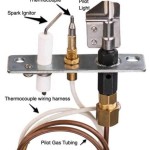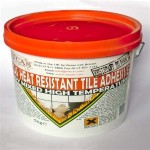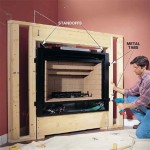Build A Stone Fireplace: A Comprehensive Guide
Building a stone fireplace is a significant undertaking, demanding careful planning, considerable physical effort, and a thorough understanding of masonry principles. A well-constructed stone fireplace not only serves as a functional heating source but also becomes a captivating architectural feature, adding warmth and value to the home. This article provides a comprehensive guide to the process, covering the necessary preparatory steps, construction techniques, and essential safety considerations.
The decision to build a stone fireplace should be approached with a realistic assessment of one's skills and resources. While this guide offers detailed instructions, hands-on experience with masonry or related construction trades is highly beneficial. If lacking such experience, seeking guidance from a qualified mason or contractor is strongly recommended. Furthermore, local building codes and regulations pertaining to fireplaces must be thoroughly researched and adhered to throughout the project.
Planning and Preparation: The Foundation for Success
Before the first stone is laid, a comprehensive plan must be developed. This plan encompasses several critical elements, including fireplace design, material selection, site preparation, and obtaining necessary permits. The design should consider the desired aesthetic, the size of the room, and the intended functionality of the fireplace. A detailed sketch or architectural drawing is highly recommended to visualize the finished product and guide the construction process.
Material selection is equally important. The type of stone chosen will significantly impact the appearance and structural integrity of the fireplace. Natural stone options include fieldstone, river rock, slate, limestone, and granite, each possessing unique characteristics and aesthetic appeal. Manufactured stone veneers offer a lighter and more cost-effective alternative, replicating the look of natural stone without the added weight and expense. Mortar selection is also crucial, as it binds the stones together and contributes to the overall strength and durability of the structure. Type S mortar is generally recommended for fireplace construction due to its high compressive strength and resistance to cracking.
Site preparation involves ensuring a solid and level foundation for the fireplace. Existing concrete slabs may need to be reinforced or enlarged to adequately support the weight of the stone structure. In some cases, a separate foundation may need to be poured. Accurate measurements and proper leveling are essential to prevent structural problems later on. The area surrounding the fireplace should also be protected with drop cloths or plastic sheeting to prevent mortar stains and other construction debris from damaging floors or walls.
Obtaining necessary permits is a non-negotiable step in the planning process. Local building codes often require permits for fireplace construction, ensuring compliance with safety regulations and fire prevention standards. Contacting the local building department early in the planning phase is crucial to determine the specific permit requirements and inspection procedures.
Construction Techniques: Laying the Foundation and Building the Firebox
The construction process begins with laying the foundation. This typically involves pouring a concrete footing that extends below the frost line to prevent shifting due to ground movement. The footing should be reinforced with steel rebar for added strength. Once the concrete has cured, the first course of stone can be laid. This course, known as the foundation course, should be carefully leveled and aligned to ensure a stable base for the rest of the fireplace.
As the stone is laid, mortar is applied to the back and sides of each stone, creating a strong bond between the stones. A consistent mortar joint width should be maintained throughout the construction process, typically around 1/2 inch. Tools such as a trowel, level, and rubber mallet are essential for achieving accurate placement and alignment. Excess mortar should be removed immediately with a damp sponge to prevent staining the stone surface.
The firebox is the heart of the fireplace and requires special attention to detail. It must be constructed with fire-resistant materials, such as firebrick, to withstand the intense heat generated by the fire. Firebrick is specifically designed to withstand high temperatures without cracking or deteriorating. The firebox should be built according to a specific design, ensuring proper dimensions and draft characteristics. A smoke chamber, located above the firebox, is essential for directing smoke up the chimney and preventing it from entering the room. The smoke chamber should be constructed with smooth, angled walls to facilitate efficient smoke flow.
The damper is another crucial component of the fireplace. It is a metal plate that can be opened or closed to control the airflow in the chimney. When the fireplace is not in use, the damper should be closed to prevent heat loss from the house. When a fire is burning, the damper should be opened to allow smoke and combustion gases to escape. The damper should be properly sized for the fireplace and installed according to the manufacturer's instructions.
The construction of the chimney is a critical aspect of the fireplace project. The chimney must be tall enough to create sufficient draft and prevent smoke from blowing back into the house. It should also be constructed with fire-resistant materials, such as brick or concrete block, and lined with a flue liner to protect the chimney from corrosive combustion gases. The flue liner should be properly sized for the fireplace and installed according to the manufacturer's instructions. The chimney should extend at least three feet above the roofline and two feet above any nearby obstruction, such as trees or other buildings.
Safety Considerations and Best Practices
Safety should be paramount throughout the entire fireplace construction process. Wearing appropriate personal protective equipment (PPE), such as safety glasses, gloves, and a dust mask, is essential to protect against potential hazards. Working with heavy stones and mortar can be strenuous, so it is important to take frequent breaks and avoid overexertion. Proper scaffolding or ladders should be used to access high areas safely.
Fire safety is a critical consideration. The fireplace should be designed and constructed to prevent the escape of sparks or embers that could ignite nearby combustible materials. A spark arrester should be installed at the top of the chimney to prevent sparks from being carried by the wind. The area around the fireplace should be kept clear of flammable materials, such as curtains, furniture, and firewood.
Proper ventilation is essential for safe and efficient fireplace operation. Ensure that the room is adequately ventilated to prevent the buildup of carbon monoxide, a deadly colorless and odorless gas. Installing a carbon monoxide detector in the vicinity of the fireplace is highly recommended. Regular chimney cleaning is also essential to prevent the buildup of creosote, a flammable substance that can ignite and cause a chimney fire. A professional chimney sweep should be hired to inspect and clean the chimney at least once a year.
Following best practices during construction will ensure a long-lasting and aesthetically pleasing fireplace. Carefully selecting and sorting stones to achieve a balanced and visually appealing pattern is important. Mortar joints should be consistently applied and tooled to create a uniform appearance. Proper curing of the mortar is essential to prevent cracking and ensure maximum strength. The fireplace should be regularly inspected for any signs of damage or deterioration, and repairs should be made promptly to prevent further problems. Finally, complying with all local building codes and regulations is crucial for ensuring the safety and legality of the fireplace construction.
By carefully following these guidelines, it is possible to build a beautiful and functional stone fireplace that will provide warmth and enjoyment for years to come. Remember that patience and attention to detail are key to success. If unsure about any aspect of the construction process, seeking professional assistance will result in a safer and more structurally sound outcome.

Tips On How To Build A Stone Fireplace Horizon

How To Build An Outdoor Stacked Stone Fireplace

Stonetutorials Living Stone Masonry

How To Build A Stone Fireplace Full

Build A Stone Fireplace Resources To Help You Stack It Up Outdoors

Stonetutorials Living Stone Masonry

How To Build A Stone Fireplace Storables

How To Build An Outdoor Fireplace Step By Guide Buildwithroman

How To Build A Diy Stone Fireplace Hometalk

Building A Stone Fireplace Ideas And Plans
Related Posts








